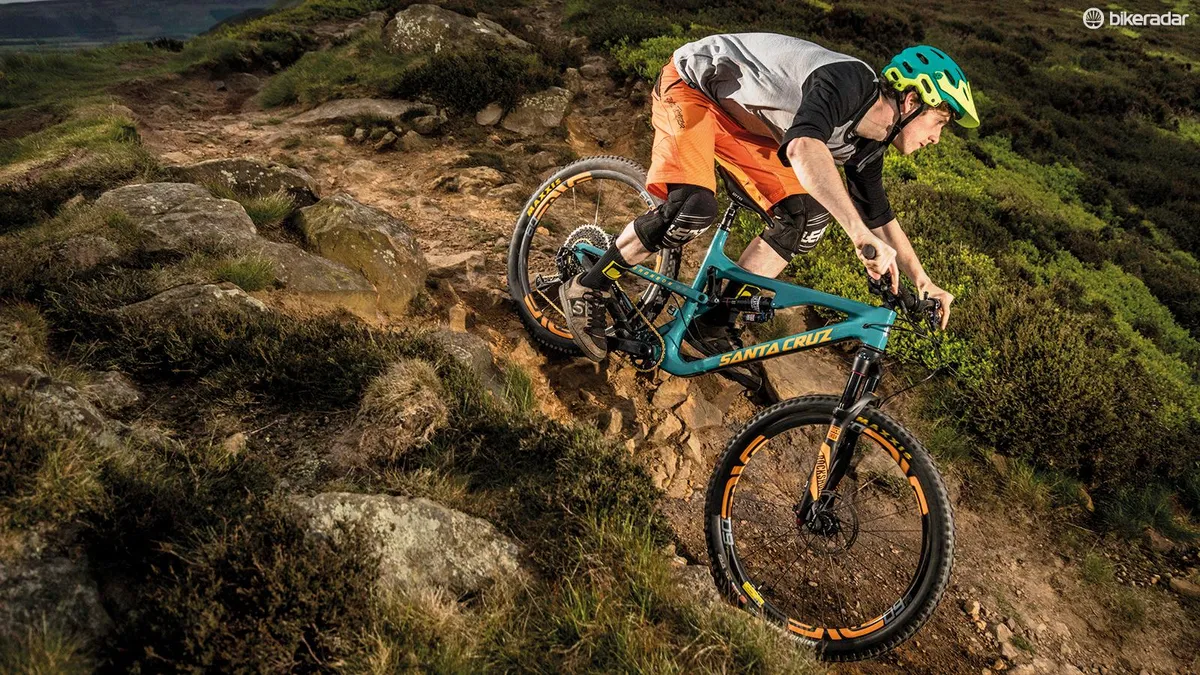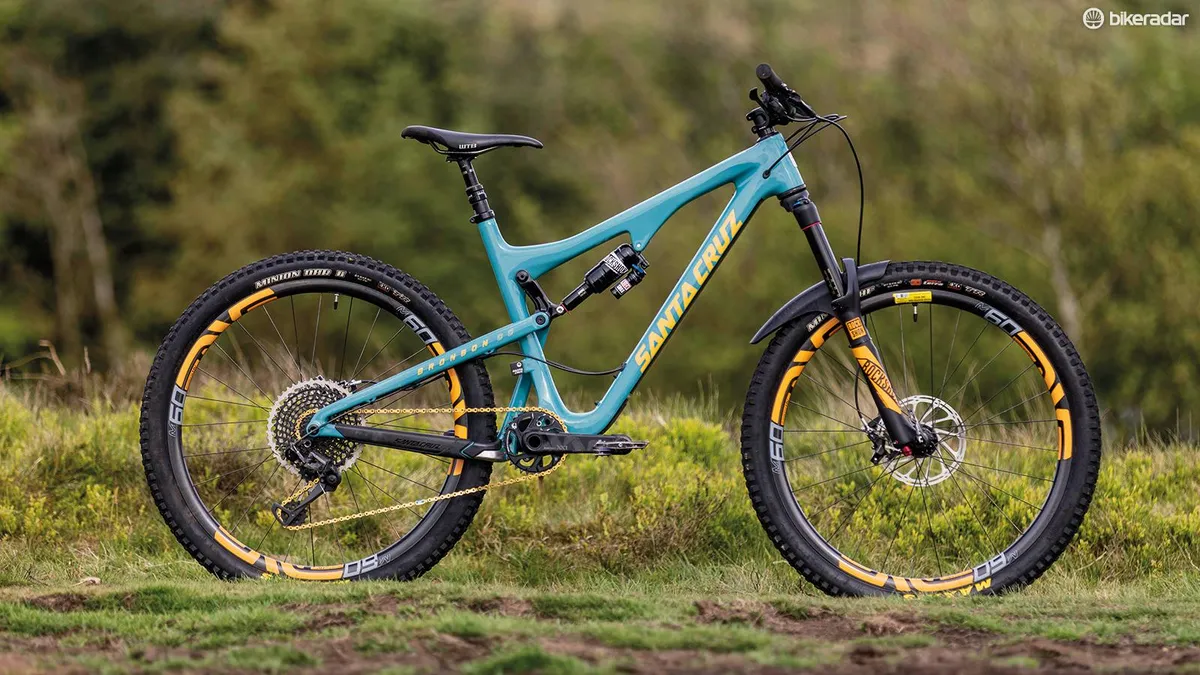Santa Cruz certainly got the superbike memo with this ENVE-wheel-upgraded, Eagle-loaded wallet ruiner, but can it possibly be worth the money?
There are three Bronson chassis options: aluminium (bikes from £3,099), ‘C’ level carbon fibre (from £3,599) and ‘CC’ carbon (from £5,199), which saves 270g thanks to a lighter layup.
The composite frames share the same stiff, square tube profiling and VPP suspension, which provides 150mm of rear travel. A threaded bottom bracket, guided internal routing, ISCG tabs, twin bottle mounts and armour panels make it a practical, user-friendly chassis.
Even with a Boost axle, tyre space is limited to a 2.4in max though, and the Bronson runs a RockShox Monarch Plus shock, not the new Super Deluxe.
The Pike fork on our sample wasn’t the 2018 model either, but the XX1 Eagle transmission and Guide Ultimate brakes are as up-to-date as it gets. ENVE carbon rims are a massive extra spend, at £2,200 more than the stock wheels (but a £200 saving on the RRP). On my US-spec bike they were laced to Industry Nine hubs, but British Bronsons come with Hope Pro 4s instead. UK bikes also get a KS LEV Integra dropper, Burgtec stem and Hope headset.
The ride

Grasping the super-stiff 800mm bar reveals the same sense of purpose as an Olympic powerlifter.
While the 66-degree head angle and 450mm reach of the large are slightly steeper and shorter than those of some other bikes tested in the Superbike of the Year category, the Bronson never fails to hold a line or front out the rowdiest trail situations. Because the front wheel isn’t quite as stable or distanced, feedback is sharper and more visceral too, sucking you right into the ride like a VR headset.
The smaller negative spring also gives a tight initial feel that suits the vein-popping, ready-to-brawl Bronson character
The refined VPP suspension plays a similar role. Not everyone is going to like the kickback felt through your feet as the linkage swings back as you hit square edges, or the reduced traction on loose surfaces. But the payback is a direct shoe-to-surface connection that lets you drive the bike through muscle twitch and body-mass shift. The massively stiff swingarm means any pedal torque or backslope pump injection surges it forward with addictive effectiveness.
That Monarch Plus shock is totally on point too, in the way it syncs with the overall bike feel. While the combined effect isn’t as plush as on the Fox-equipped bikes here, the RockShox damper’s ability to hold ride height and communicate traction no matter how hard you’re cornering or driving through rocks and drops is both breathtaking and neck-saving. There was also none of the fussing and fettling faff that I went through with practically every X or X2 shock to find the sweet spot.
Ragging the Santa Cruz through the rowdiest sections reminded me just how great the second-gen Pike is. While the ‘Torque Cap’ oversize hub connection and ENVE rim clearly help in terms of tracking accuracy, it’s remarkable how composed the Charger damper stays, right to the ragged edge.
The smaller negative spring (compared to the 2018 Pike) also gives a tight initial feel that suits the vein-popping, ready-to-brawl Bronson character, while the low fork weight contributes to the overall snap responsiveness and agility that brings every metre of trail alive.
While the cost-no-object spec underlines the ride of the Bronson beautifully, I also isolated the frame feel by swapping in more standard wheels (it’s £5,999 with Race Face ARC 27 rims and the same hubs). The result isn’t quite as crazy-precise and in-your-face feedback rich, but it’s still predatory in its attitude to bagging new segment times or crushing your mates’ egos.
If you like your rides tight, vividly communicative and hench enough to face down the toughest technical sections but still lightweight and agile enough to light up the climbs and singletrack, then it doesn’t get any better than the Bronson.

